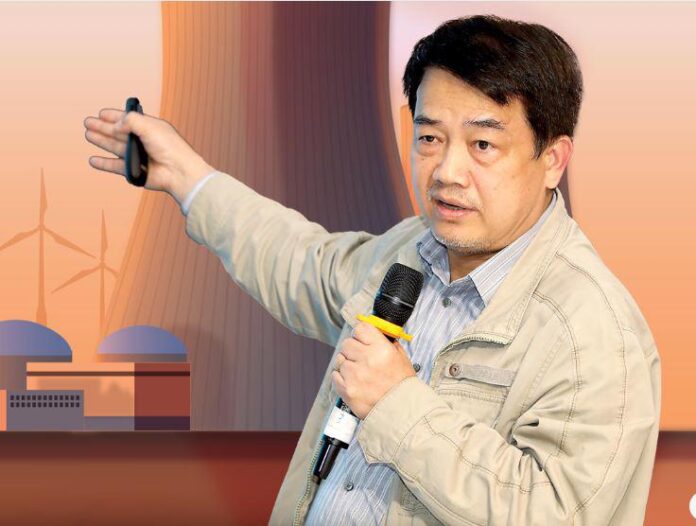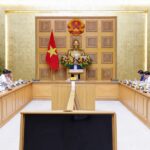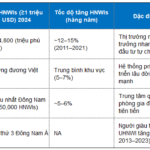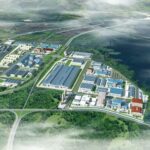Nuclear power has been included in the first adjustment to the National Power Development Plan VIII (PDP8), with a projected capacity of 6,000-6,400 MW. This is a significant development, and VINATOM welcomes the opportunity to provide our perspective on this important topic.
Nuclear energy plays a crucial role in ensuring a stable and sustainable energy supply for Vietnam’s future development. We believe that the inclusion of nuclear power in the PDP8 is a well-thought-out decision, and the projected capacity is in line with Vietnam’s energy needs and goals. However, we also emphasize that determining the appropriate capacity involves careful consideration of various factors and comprehensive studies.

Given Vietnam’s current situation and capabilities, what is your recommendation on the number of reactors that should be developed?
VINATOM, as a leading consulting body for nuclear power technology and safety research, recommends a cautious and phased approach. We suggest starting with a realistic number of reactors, considering Vietnam’s current capabilities and infrastructure. Our assessment indicates that Vietnam can initially aim for the development of 2-4 reactors, with a focus on ensuring safe and efficient operations.
We emphasize the importance of a well-structured, comprehensive, and long-term nuclear power program. Vietnam is actively preparing for the Ninh Thuan Nuclear Power Project, and our policy framework emphasizes the utilization of advanced, proven, and safe technologies. By adopting Generation III+ nuclear technology, Vietnam can benefit from its large installed capacity and ensure a sufficient electricity supply from the early stages of nuclear power development.
Additionally, Vietnam has been proactive in developing the necessary infrastructure and workforce in recent years. This aligns with our strategy to utilize large-capacity, advanced, and safe reactors, ensuring we can maximize the benefits of nuclear power while prioritizing safety and sustainability.
What foundations and advantages does Vietnam have to ensure the safe and sustainable development of nuclear power?
Vietnam has a long-standing interest in nuclear power and has been preparing its workforce by providing training opportunities in renowned institutions worldwide. The approval of the Ninh Thuan Nuclear Power Project in 2009, followed by its suspension in 2016, and the recent decision to restart the project, showcases the country’s commitment to this endeavor. The amendments to the Law on Electricity further demonstrate the legal framework supporting nuclear power development.
The revival of the nuclear power project is a significant step forward, addressing both energy security and the transition to a green and sustainable economy. Vietnam’s advantages lie in the strong policy direction, commitment from the government, and public consensus. Additionally, the passion and expertise of Vietnamese researchers and scientists in natural sciences will drive the advancement of nuclear technology and its safe implementation.
International partnerships and support from the International Atomic Energy Agency (IAEA) further strengthen Vietnam’s position. These collaborations provide access to advanced technologies, best practices, and expertise, creating favorable conditions for successful nuclear power projects.
What challenges do you foresee in Vietnam’s nuclear power development journey, and how can these be addressed?
One of the main challenges is ensuring a highly skilled workforce across research, management, and operations. Vietnam must invest in training and developing experts in nuclear power, focusing on both plant operations and research and development. Regulatory authorities play a crucial role in overseeing safety compliance and legal enforcement, and their establishment is key to the industry’s success.
Additionally, strengthening the nuclear regulatory framework and overall infrastructure is essential. Vietnam can address challenges related to capital investment and radioactive waste management through international collaborations and by learning from experienced nuclear nations. By combining domestic and international resources, Vietnam can build a robust foundation for its nuclear power industry.
How can Vietnam develop the skilled workforce necessary for the nuclear industry?
VINATOM recommends a three-pronged approach to developing a skilled nuclear workforce: First, focus on specialized university education and hands-on training for plant operators, a process that typically takes about ten years. Second, invest in research and development experts to advance nuclear technology and ensure the industry’s long-term growth. Third, establish regulatory authorities with experienced professionals to oversee safety and legal compliance.
A comprehensive national nuclear workforce strategy, incorporating both domestic and international training programs, will be key to success. Vietnam can learn from established nuclear power sectors and collaborate with international partners to build its capabilities.
VINATOM, how will the development of nuclear power create opportunities and build capabilities across various industries in Vietnam?
Nuclear power is a highly specialized field, and safety is the top priority. As Vietnam embarks on this journey, strict adherence to processes and international standards will be crucial. The nuclear power project will create opportunities for scientific and technological advancement, fostering the development of critical industries such as design, consulting, mechanical engineering, materials, and metallurgy.
Additionally, nuclear power presents unique opportunities for Vietnam to develop capabilities in automated control, reactor control, chemistry, and water treatment. These foundations will contribute to the overall development of the country, enhancing domestic capabilities and supporting the transition to clean and green energy sources.
What role can Vietnam play in the development of this nuclear power project, and how can it contribute to the process?
Vietnam aims to actively participate in the construction process, gradually moving from manufacturing basic equipment to more complex, high-technology components. We will focus on training our domestic workforce to master the process, understand technology and design, perform calculations, and ensure safety monitoring. By learning from international best practices and collaborating with technology transfer countries, Vietnam can enhance its domestic capacity and work towards localization.
The amended Law on Atomic Energy, currently being finalized for presentation to the National Assembly, aims to institutionalize the policy of developing atomic energy for peaceful purposes. This law will provide a comprehensive legal framework for the research, application, and development of nuclear technology, ensuring safe and sustainable progress.
The Pearl of Vietnam’s Stock Market: Vinpearl’s HoSE Listing Leaves Rivals in the Dust
With a valuation of approximately 128 trillion VND, Vinpearl has surpassed veteran brands such as Vinamilk, ACB Bank, and the Masan Group to become one of the top-capitalized companies on the Vietnamese stock exchange.
“Unlimited Innovation”: Unlocking Private Sector Growth
The government has unveiled a series of strategic resolutions, known as the “Fab Four,” which are set to revolutionize Vietnam’s future. These include Resolution 57-NQ/TW, which focuses on breakthrough development in science, technology, innovation, and digital transformation; Resolution 59-NQ/TW on international integration; Resolution 66-NQ/TW, which aims to reform law-making and enforcement; and Resolution 68-NQ/TW, dedicated to fostering private economic growth. These resolutions are designed to work in harmony, creating a vibrant and innovative Vietnam, open to global opportunities, with a robust private sector and a legal system to match.
The Battle for Private Banking Supremacy in Vietnam
According to the Knight Frank Wealth Report 2024, Vietnam is home to approximately 5,459 individuals with liquid assets exceeding $10 million, accounting for 0.2% of the global high-net-worth individual (HNWI) population and ranking sixth in Southeast Asia. The Asia-Pacific region, hailed as the “Asian Century,” has witnessed robust economic growth, leading to a rapid increase in the number of HNWIs and ultra-high-net-worth individuals (UHNWI). Knight Frank predicts a 26% rise in Vietnam’s ultra-rich population (those with assets over $30 million) by 2026, reaching approximately 1,551 individuals, while the millionaire cohort is expected to grow from 72,135 to 114,807. Additionally, McKinsey estimates that Vietnam’s personal financial assets will reach around $600 billion by 2027, exhibiting a 15% annual growth rate between 2011 and 2021, double the regional average, underscoring the surging demand for comprehensive wealth management services.
The Renowned Vietnamese Tile Manufacturer’s Venture in Cuba: A 6-Year Journey to Admirable Success
For over six years, this project has been a symbol of economic collaboration between Vietnam and Cuba.
“Cienco4 Barred from Bidding in Ha Nam Province Due to Document Forgery in University Project”
Cienco 4 has established itself as a key player in major infrastructure projects across Vietnam. With a proven track record in large-scale developments, the company has been instrumental in shaping some of the nation’s most significant transportation hubs. Their expertise and involvement can be witnessed in the Quang Tri Airport, a 5.8-trillion VND project, as well as the prestigious Long Thanh Airport, where they undertook Package 4.6, valued at 8.1 trillion VND. Additionally, their portfolio includes the Le Van Luong – Hanoi’s Ring Road 3 tunnel, further showcasing their capabilities in delivering complex and vital infrastructure projects.





















